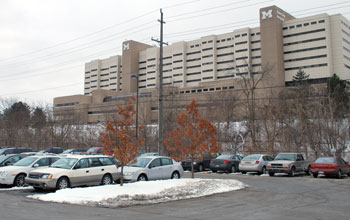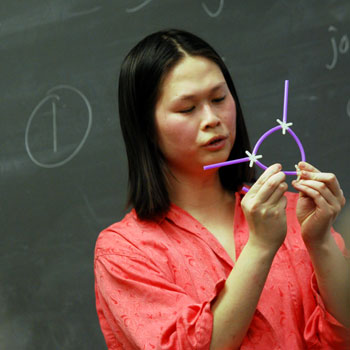Editor’s note: At a recent meeting of the Ann Arbor city council, an item in the city’s capital improvements plan to shift and extend the runway at Ann Arbor’s municipal airport generated much discussion. This installment of “In the Archives” takes a look at Ypsilanti’s airport, which has faded from the landscape.
The delicate blue Waco 10 biplane roared 10 feet over the grass, past the crowd in the stands. Approaching trees at the airfield’s far end, its nose rose and it climbed, becoming smaller and smaller in view.

An photograph of a Waco 10 from the airshow program. Five aviators at the 1927 Ypsilanti air show competed in the cutting-edge biplane. (Photos courtesy of the Ypsi Archives.)
The gargling buzz of its 90-horsepower engine grew fainter, until the craft sounded like a distant housefly. Watchers from Detroit, Ypsilanti, and Ann Arbor under the 4 o’clock June sun shaded their eyes with their hands.
The buzz stopped: 1,500 feet in the air, the plane was without power.
The biplane arced to the left, trying to loop back towards the field. The crowd watched intently. The biplane curved again, losing altitude. A box of popcorn fell from the hand of a little boy watching, his mouth open. The plane’s wings wobbled. Airplane and crowd were quiet. On a nearby farm, a dog barked.
The plane dropped. Nearing the field, it slowed, its toylike wheels just a yard over the ground. The plane nearly stalled – and then landed as gently as a butterfly. It rolled to a stop. Its nose nearly touched a black and white checkered pylon. The crowd began clapping and cheering as two men ran to the plane and stretched a yellow measuring tape between the plane’s silver nose and the pylon. One yelled a number. The crowd grew louder, some people standing to cheer and whistle.
The pilot grinned and thrust both fists up. He’d won the “dead-stick” engine-off gliding and landing contest at the 1927 Ypsilanti Airport air show. [Full Story]










